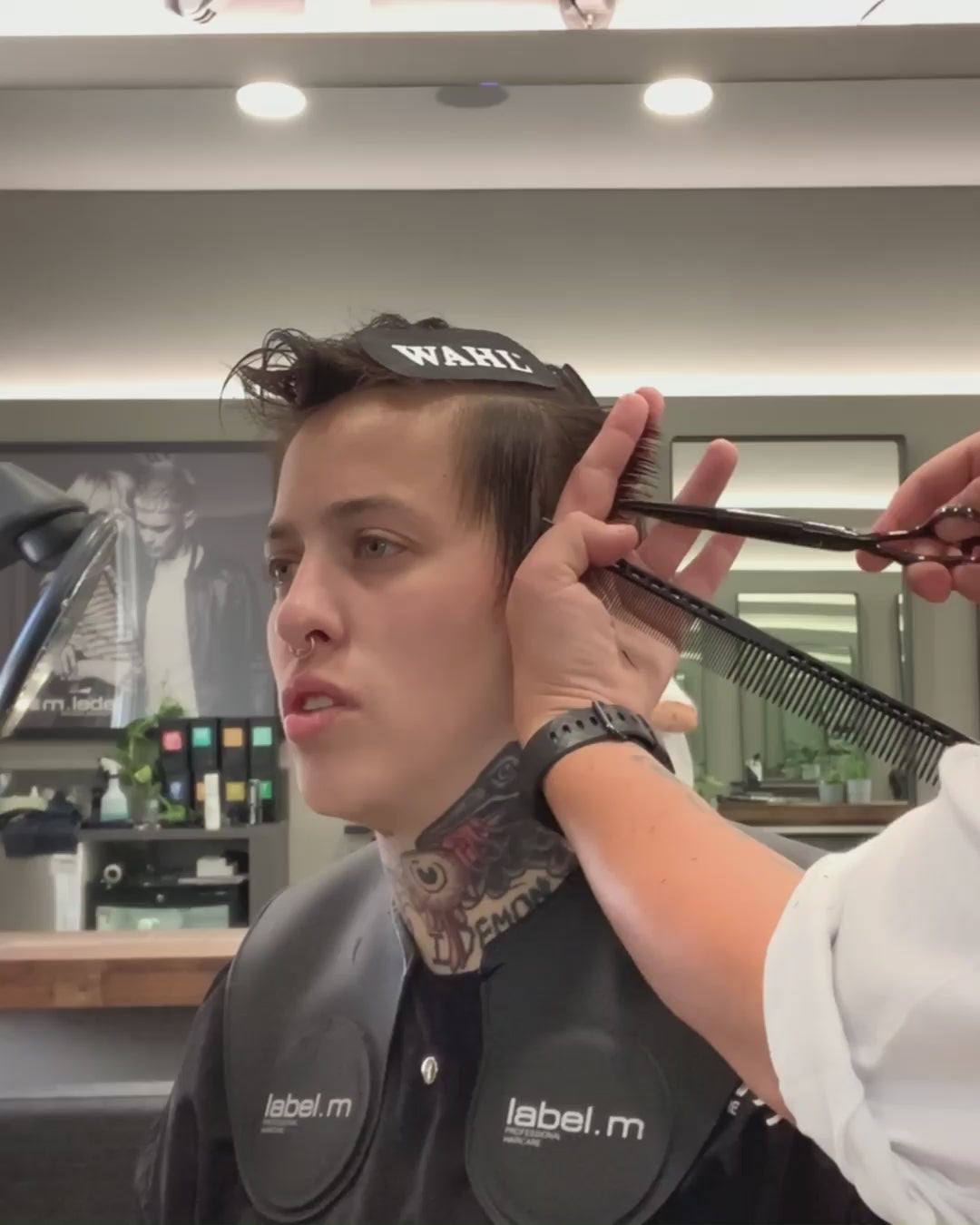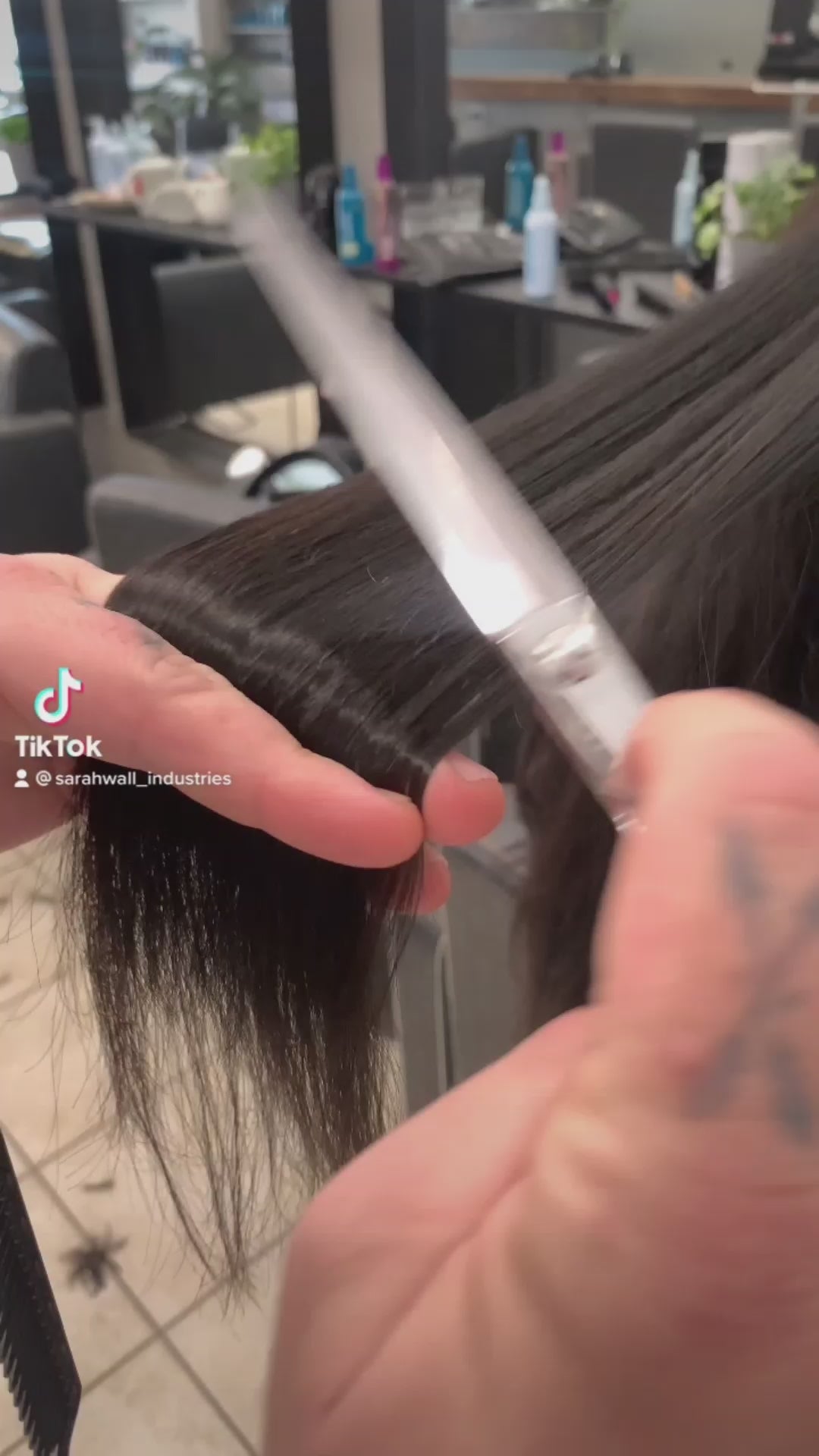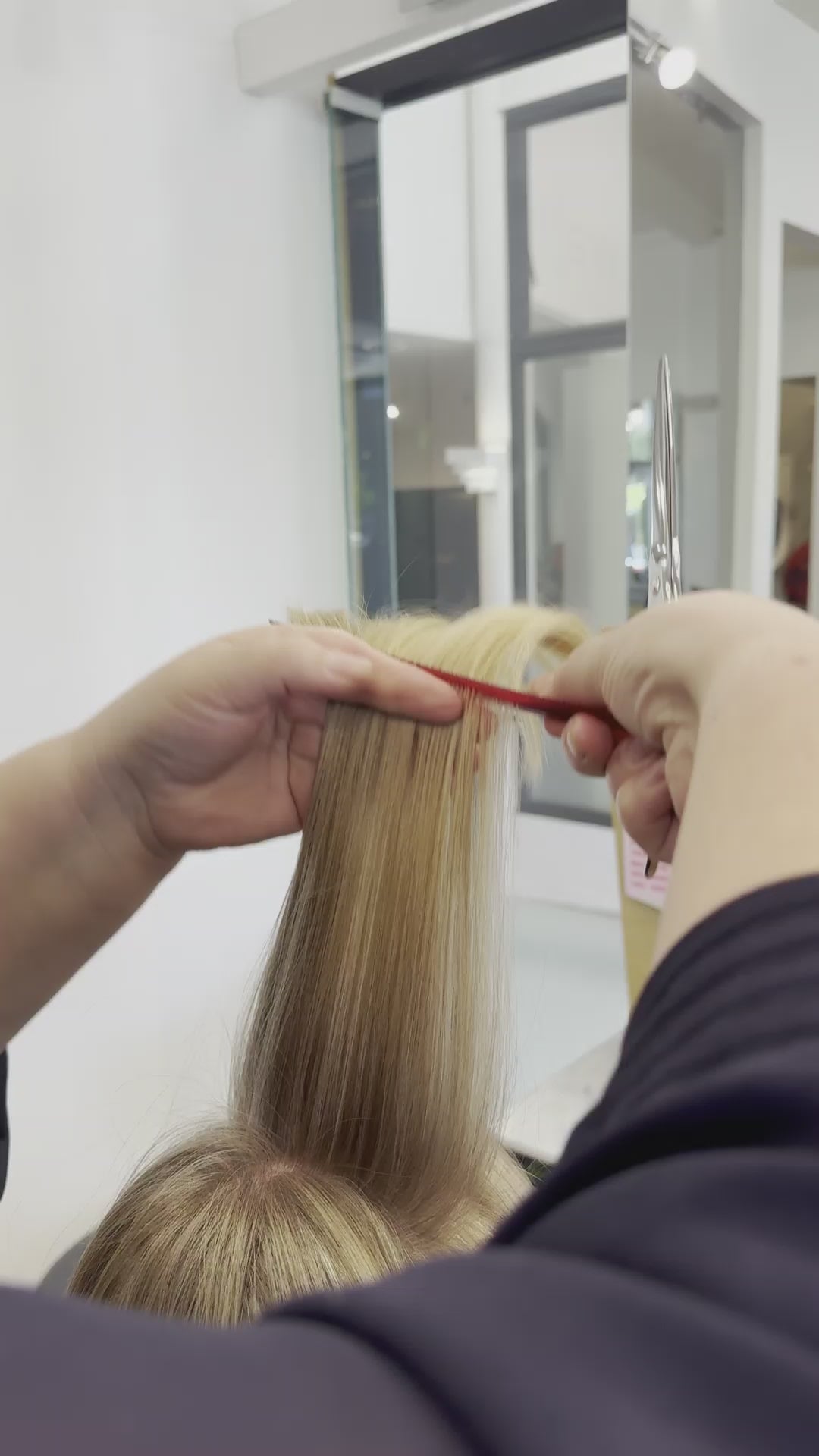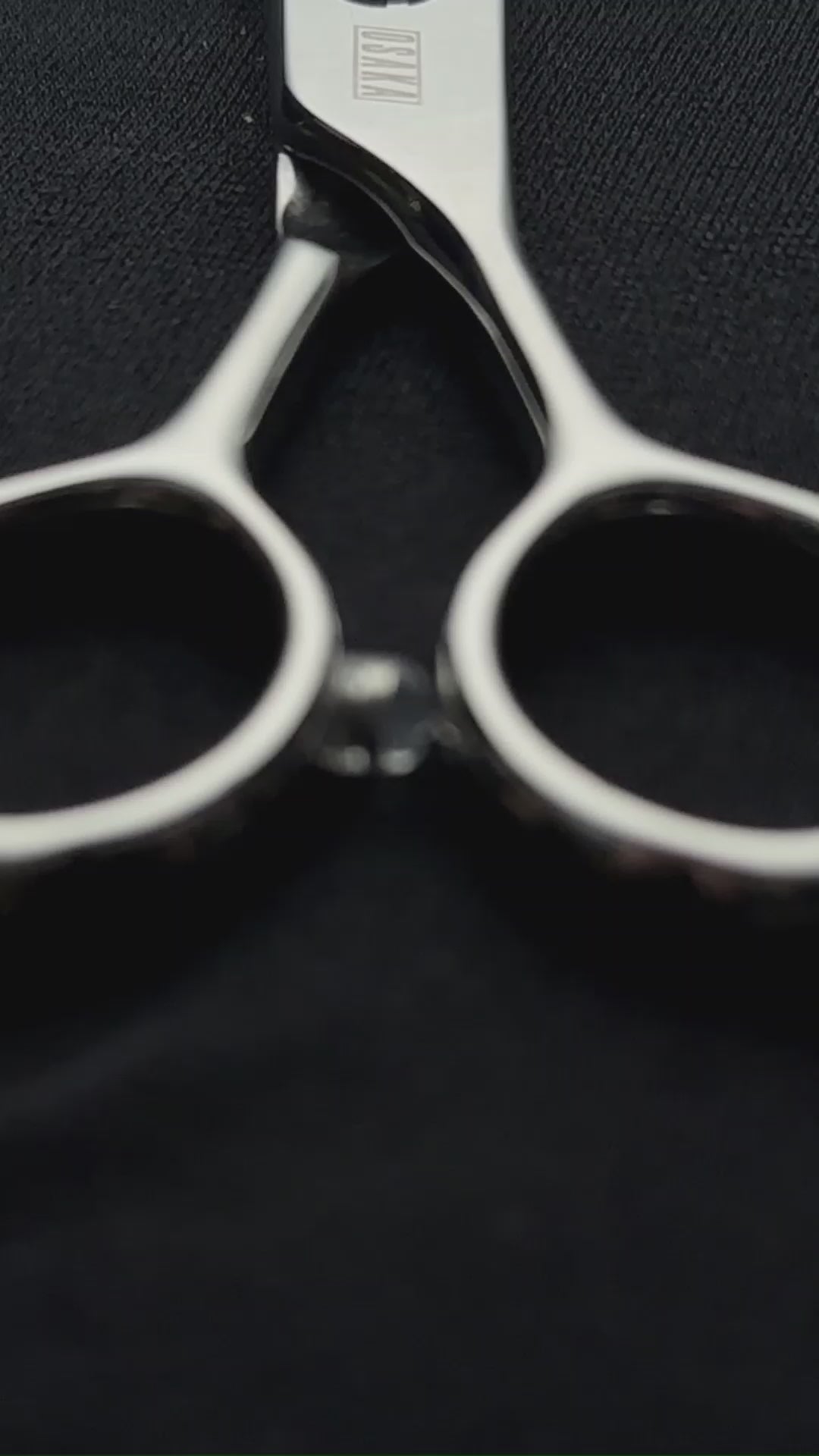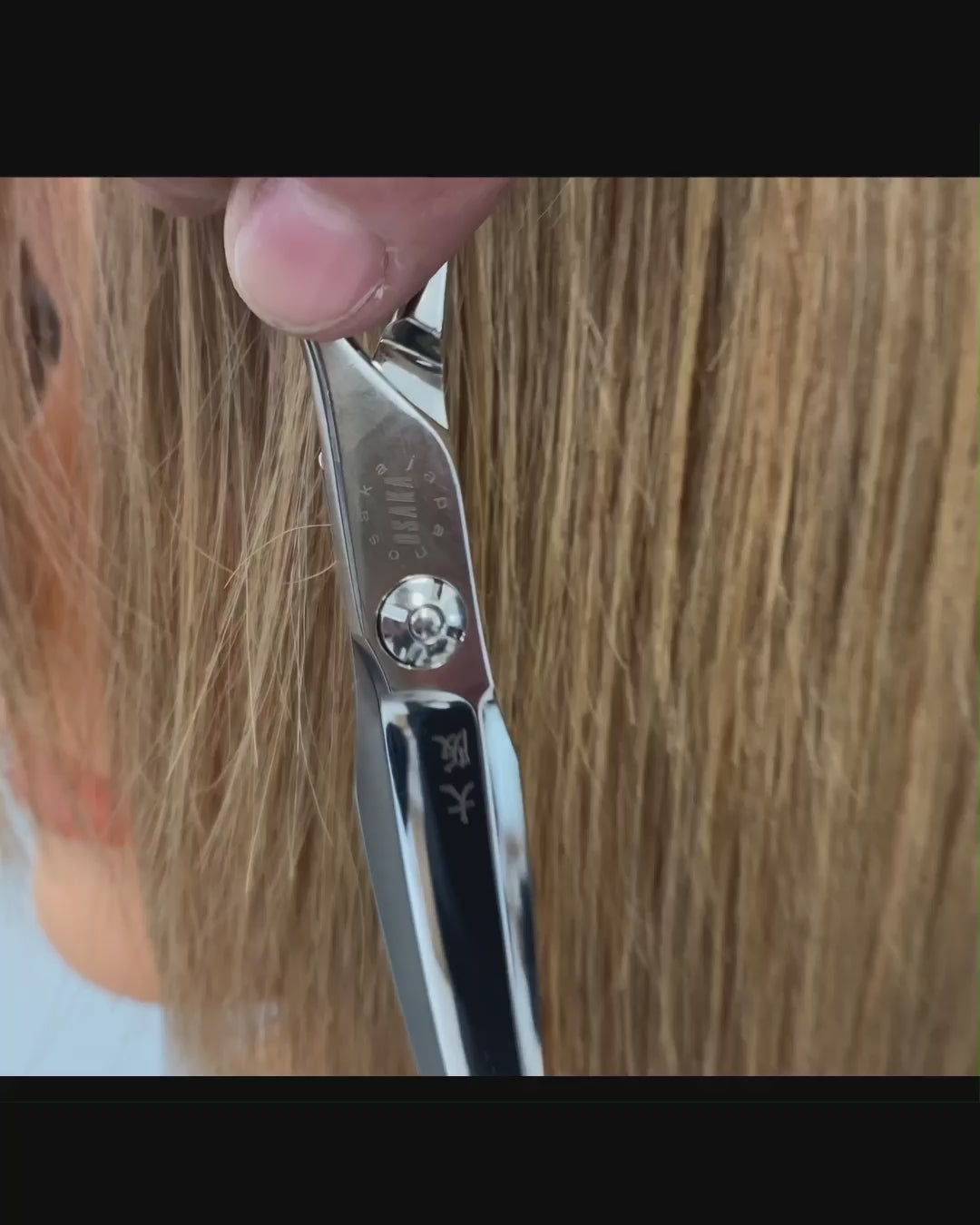How to Properly Use Haircutting Scissors for Different Hair Types
Any stylist working the chair long enough gets familiar with aching wrists and methods that bomb completely on different hair textures. The industry rarely connects hair type to tool selection and cutting method. That little twinge in your hand today? It snowballs into genuine damage across your hands, wrists, and shoulders down the line. Repetitive strain doesn't just slow you down; it can end your career behind the chair altogether. This guide connects hair behaviour, tool selection, and ergonomic health so you can deliver flawless cuts without sacrificing your body.
The Hair Language Most Stylists Never Learn to Speak
Fine hair is thinner individual strands without much density, which makes it fragile. Push texturising too far and you'll end up with visible gaps. Medium hair has more body to it; it holds structure better and responds well when you add layers. Coarse hair packs thick strands with serious density, so you need to pull out significant bulk or it won't move right.
Curl pattern matters equally. Straight hair shows every mistake. Wavy hair can disguise inconsistencies but requires careful perimeter control. Curly and coily hair shrinks dramatically when dry—you must account for the spring factor and work with natural fall. Each texture requires a different approach: weight removal for thick hair, movement for medium textures, bluntness for fine strands, and precision texturising for curls.
The Length Paradox Every Stylist Should Understand
Blade length directly impacts control and speed. Short blades (4.5–5.5 inches) excel at detailing and precision lines. Standard blades (5.5–6 inches) handle most cuts with balanced versatility. Long blades (6–7.5 inches) are built for scissor-over-comb work and barbering speed.
Research on tool performance reveals precision tools consistently score higher for quality and control versus speed-focused implements. Research shows scissors scored 9.6 out of 12 for quality, taking 30 to 120 seconds per collection compared to clippers' sub-30-second speed, with identical restraint and skill requirements. The takeaway is clear: accepting a modest time investment pays off significantly when precision determines the final result. Haircutting scissors for different hair types require this strategic thinking about when control trumps velocity.
The Hidden Tax Every Hairdresser Pays With Their Wrists
Convex edges offer razor-sharp precision for slide cutting and texturising. Bevelled edges are more durable for high-volume work. But handle design is the real game-changer. Offset handles reduce wrist deviation. Crane handles drop the thumb ring lower, minimising shoulder elevation. Swivel handles eliminate repetitive strain during extended sessions.
Occupational health research paints a sobering picture. Hairdressers spend 9–13% of their working time with arms elevated above 60 degrees—a major risk factor for shoulder disorders. Repetitive wrist movements with forceful exertion cause higher hand and wrist pain rates. Working with elevated arms 6–8 hours daily increases the odds ratio for work-related musculoskeletal disorders to 8.4.
The 12-month prevalence data are stark: lower back pain (13–76%), neck pain (9–58%), shoulder pain (28–60%), hand/wrist pain (11–53%). Ergonomic handles aren't luxury features—they're health preservation tools that protect career longevity.
The Four-Texture Rule Book for Scissor Selection
Fine and Thin Hair
Preserve weight at the perimeter while adding movement without holes. Use shallow point cutting, micro-slide, and soft bevelling with lighter tension, sharper convex edges, and shorter blades. Avoid aggressive thinning near ends.
Research shows microscopic hair damage occurs even without visible changes in density or breakage. For fine hair showing damage most readily, sharper convex edges prevent mechanical trauma, lighter tension reduces stress on vulnerable strands, and shallow point cutting preserves structural integrity. Remarkably, 89% of subjects using thermal styling tools showed microscopic structural changes—validating protective cutting techniques on compromised hair. Haircutting scissors for different hair types must account for existing damage, especially in fine textures.
Medium-Density Hair
Aim for a balanced structure with controlled movement. Club cutting builds perimeter strength while internal layering introduces flow. Use standard blade lengths, consistent tension, and clean sectioning. Avoid uneven elevation causing shelf lines and over-layering around the face.’
Thick and Coarse Hair
Focus on weight removal and bulk control. Use slide cutting, channelling, and controlled thinning. Long blades provide coverage; thinning shears with fewer teeth allow effective debulking. Avoid over-thinning at roots and harsh lines in high-density zones.
Curly and Coily Hair
Prioritise shape integrity, curl health, and minimal frizz. Dry cut for true length and shrinkage accountability. Work curl-by-curl with low-tension perimeter work. Use ultra-sharp edges and deliberate snips—avoid excessive slicing. Never assess wet-only or cut without respecting shrinkage.
The Barbering Secrets Many Salon Stylists Overlook
Scissor-over-comb demands long blades, steady rhythm, and consistent elevation. Blunt perimeters require horizontal discipline and precise tension control. Know when to use thinning shears for bulk removal versus texturising scissors for surface refinement.
The Three Variables That Make or Break Every Section
Elevation determines everything—low elevation builds weight, high elevation removes it. Over-direction creates flow by shifting hair before cutting. Tension consistency matters—wet hair stretches, so high tension can result in shorter dry lengths. Adjust grip and pressure accordingly.
The 60-Second Ritual That Extends Your Scissors Blade Life by Years
Keeping your blades clean and oiled every day stops rust from taking over. After your last client, wipe the blades down, put a drop of oil where the screw sits, and open and close them several times so it gets everywhere. Want to check if tension's right? Hold them horizontal and flip one blade up 90 degrees. It should fall about halfway down and hold there. Always tuck them into their case when you're done.
Waiting Until Your Blade Goes Dull Is Just Too Late (And What You Can Do Now)
When scissors get dull, they'll crease the hair instead of cutting it cleanly, or they'll catch and pull. Busy stylists need them sharpened every three to six months. Weekend cutters can go a year. Convex edges need more frequent attention than bevelled. Professional sharpening preserves blade geometry—amateur methods ruin angle and balance permanently.
Four Cutting Crimes Committed Daily in Every Salon
Over-texturising fine hair ends strips density. Uneven elevation causes shelf lines. Wrong blade length throws off your control and slows you down. Badly designed handles wear out your hands fast, make your cuts uneven, and stack up injuries that never really heal.
The Most Crucial Conversation Before The First Snip
Align technique with the client's lifestyle and styling habits. Always refine on dry hair for accuracy. Educate clients on maintenance, products, and booking cadence. This builds trust and ensures lasting satisfaction.
Technique Trumps Tools? Fact: You Need Both
Precision, hair-type awareness, and ergonomics form the foundation. But tools matter. The right haircutting scissors for different hair types make a solid stylist even better. Osaka's been dialling in this formula for 30 years: tracking down top-tier Japanese steel that holds its edge through countless cuts, building handles that save your joints from breaking down, and tweaking designs that let your creativity run.
From fine hair needing razor-sharp convex blades to thick textures demanding longer lengths or curls requiring gentle tension, Osaka's curated range delivers practical tools designed for daily salon realities. Their professional accessories ensure tools stay protected, and expert sharpening services preserve peak performance.
Australian stylists committed to long-term excellence will find Osaka's collection protects both professional reputation and physical well-being. Choose scissors tailored for fine, thick, or curly textures with joint-saving ergonomic handles, all backed by lifetime manufacturing guarantees. Orders over $200 ship free, while value packs combine cutting and thinning shears, making professional-grade equipment attainable from the start. Precision begins with you—but the right scissors sustain it for decades.





